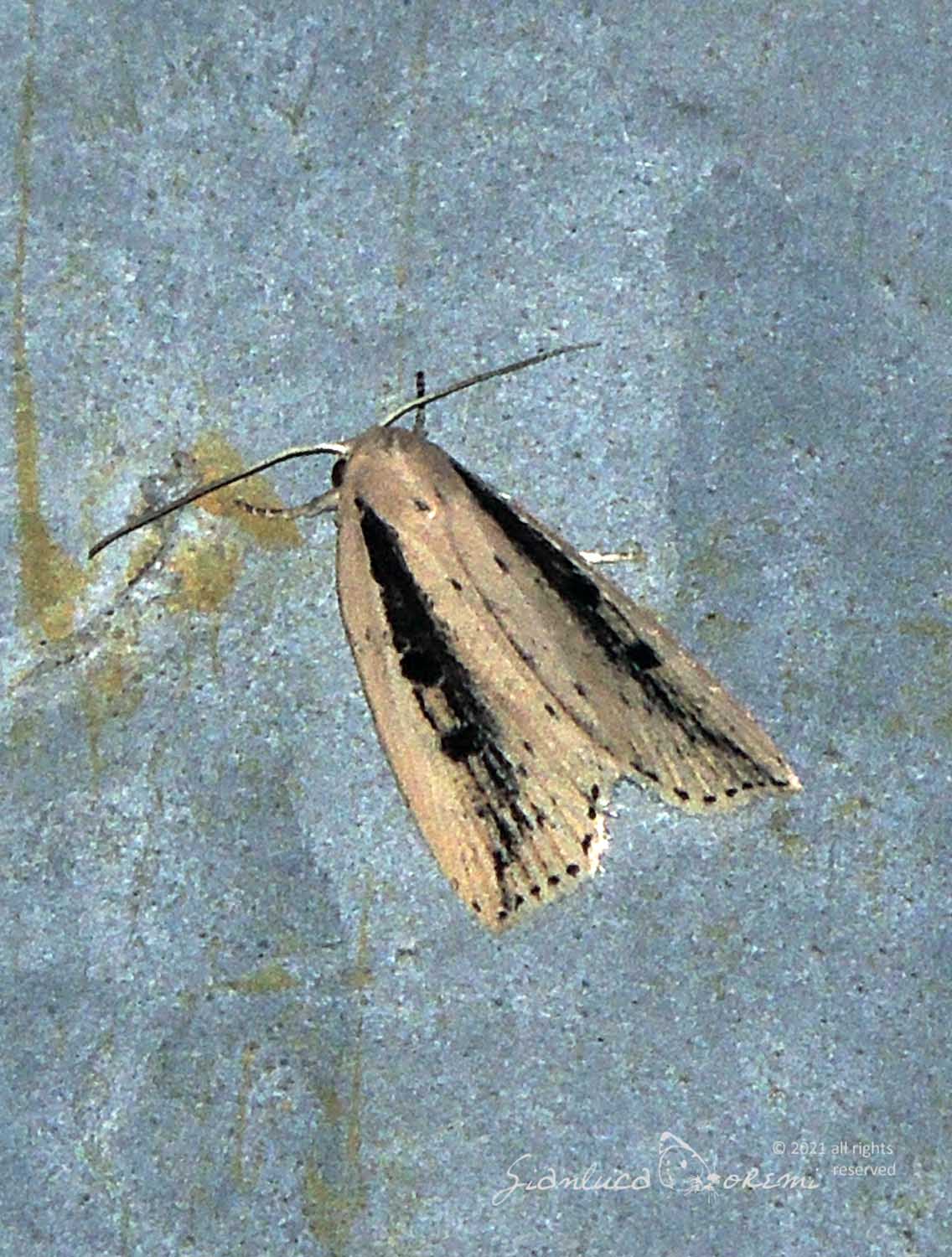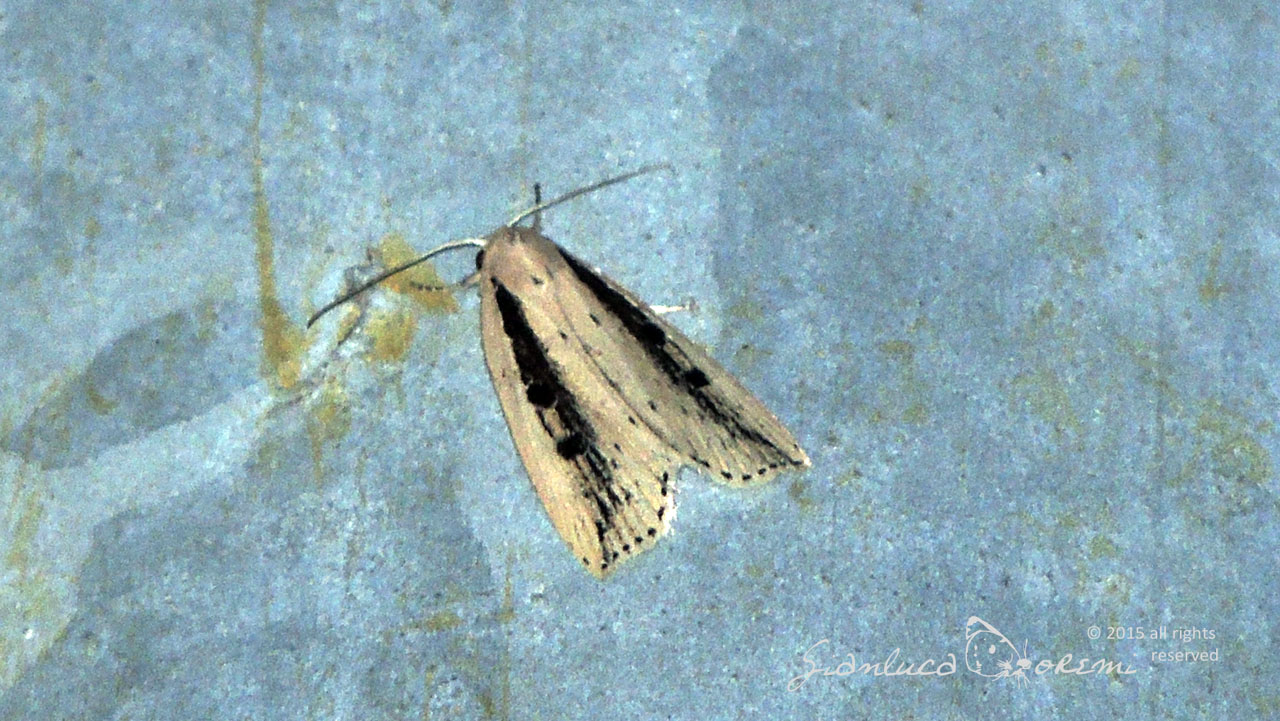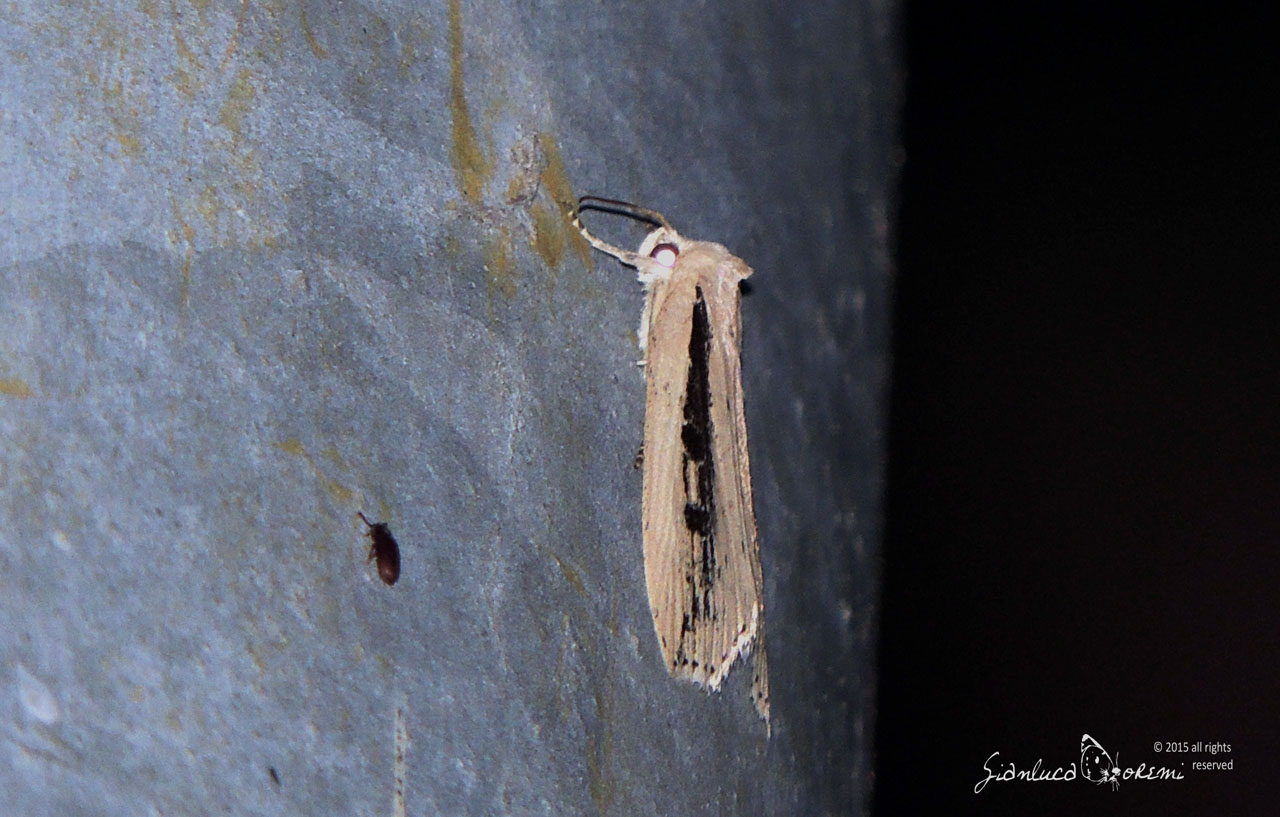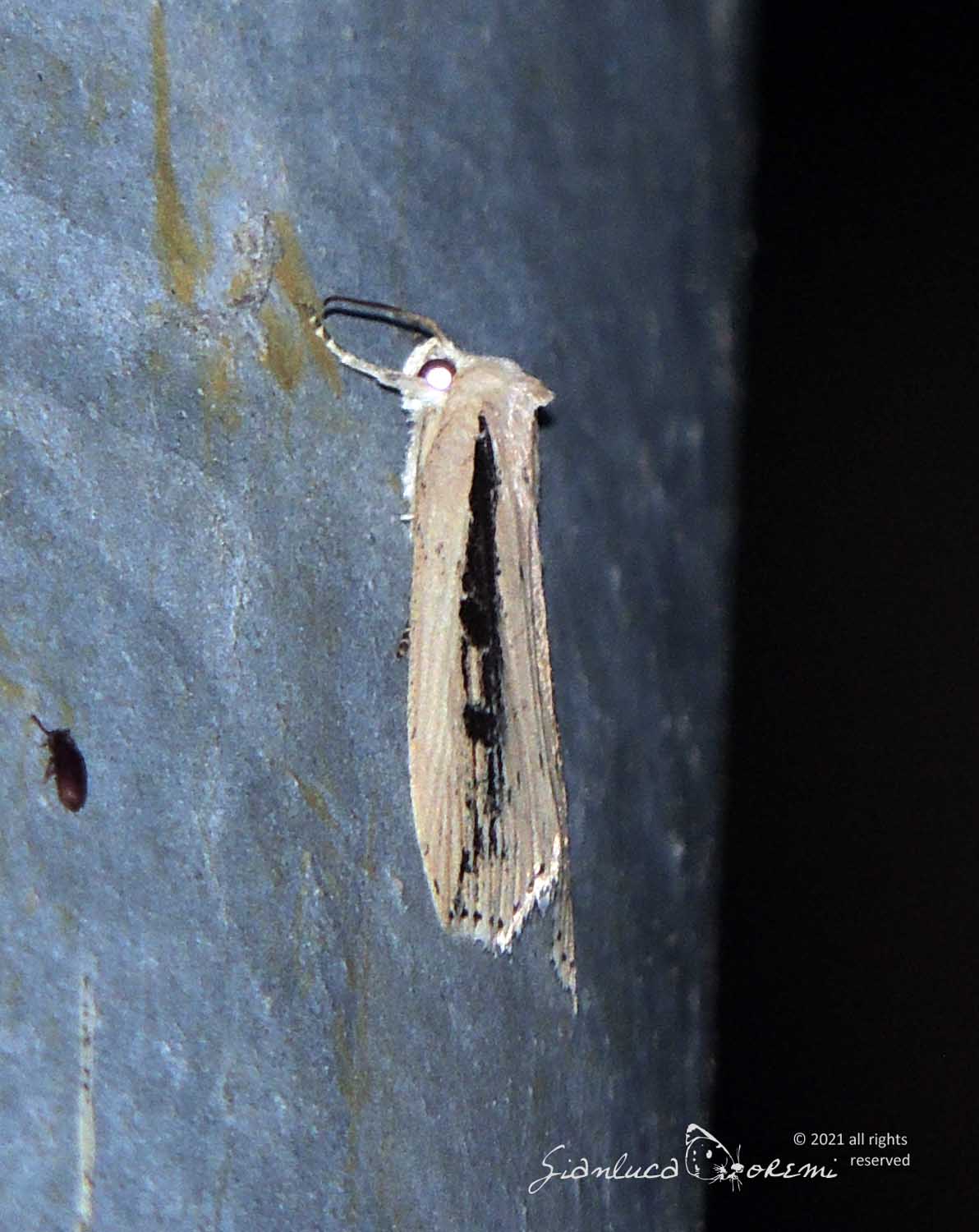Chilodes maritima
(Tauscher, 1806)
-
 Subfamily: Noctuinae
Subfamily: Noctuinae -
 Wingspan: 28-36 mm
Wingspan: 28-36 mm -
 Flight period: May - Sep
Flight period: May - Sep -
 Spread: Uncommon
Spread: Uncommon -
 Host plants: Phragmites sp., Typha latifolia
Host plants: Phragmites sp., Typha latifolia
Information
The Chilodes maritima also called Silky Wainscot is a moth of the Noctuidae family, subfamily Noctuinae,
with wingspan of 28-36 mm.
In Europe we find it almost everywhere, it is absent from Ireland and northern Russia
In Italy it is present in Sicily but not in Sardinia. *
The base color of the front wings of the Chilodes maritima is pale yellowish-gray, the apex is angled (not rounded),
the termen has a steep angular curve around its center, it has shades of silky white color.
Polymorphic moth has various forms:
The nigristriata form has black interneural streaks in the costal half of the forepart;
the bipunctata form has two similar bold black dots, representing oval and kidney marks;
the form wismariensis also has two black spots, but in addition it has a long black stripe running from the anterior base through
the black spots that almost reach the termen.
The hind wings are white, with a silky appearance with a faded brown discal spot and another series of smaller spots on the vents in the postdical region.
Slight dustings of the same color and a series of dark strokes along the edge are also visible in the patients between ventures.
Head and thorax are in the background color of the front wings, the abdomen is lighter almost white. Outstretched chest and abdomen have moderate hair. **
It is a rather unusual species, which having more and more distinctive forms, may resemble some members
to the Crambidae family such as the Chilo phragmitella .
This moth has one generation per year and is visible from May to September. ***
The species frequents marshy and coastal environments where there are reeds on the basal level. The intensification of cultures also in these areas is the major cause of decline.
It is easily attracted to light.
The larva is light brown / washed ocher. The head of the same color has a slightly darker shade. **
It is partially carnivorous and can feed on other insects including the pupae of other Wainscot. ****
The larva feeds on Phragmites sp. and of, Typha latifolia
* Lepidoptera mundi https://lepidoptera.eu/ - Fauna Europea https://fauna-eu.org/
** Bestimmungshilfe für die in Europa nachgewiesenen Schmetterlingsarten - http://lepiforum.de/
*** Roland Robineau, Guide de papillons nocturne de France, Delachaux et Niestlé, 2011 p. 158
**** Online guide to the moths of Great Britain and Ireland - https://ukmoths.org.uk/







 EN
EN ITA
ITA
Social and publications